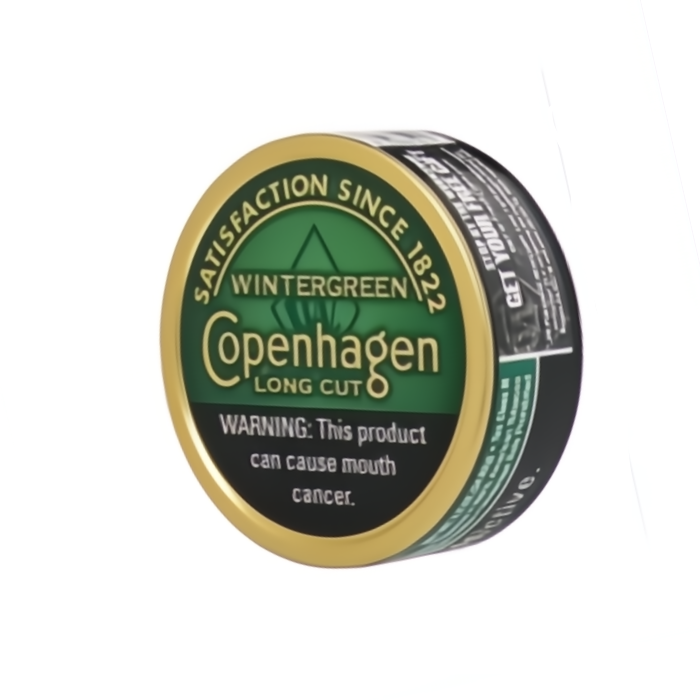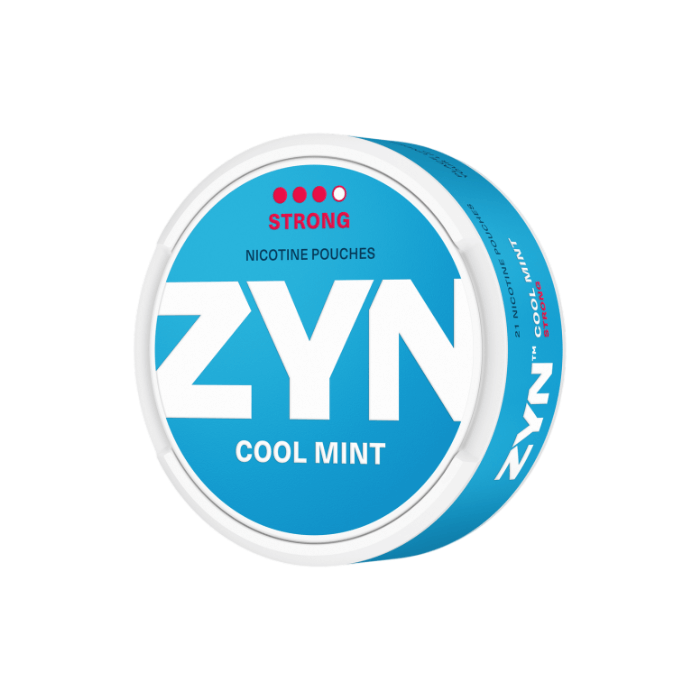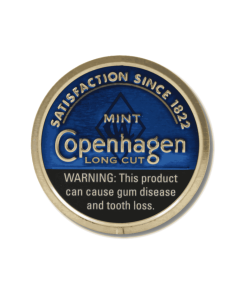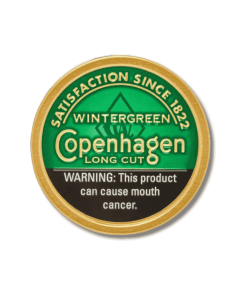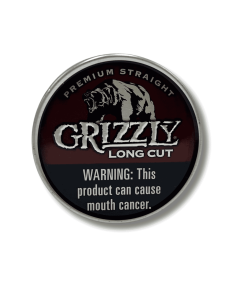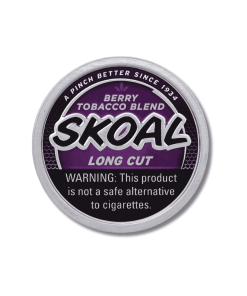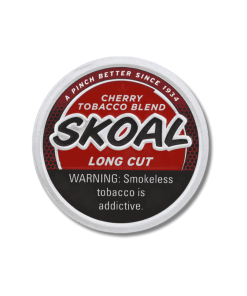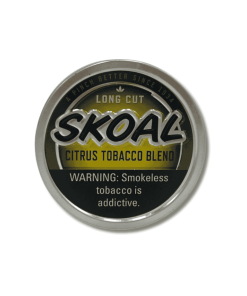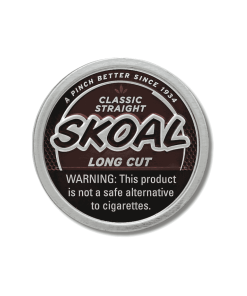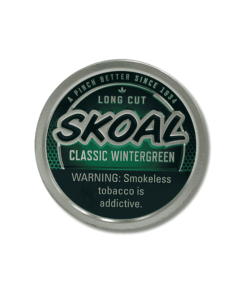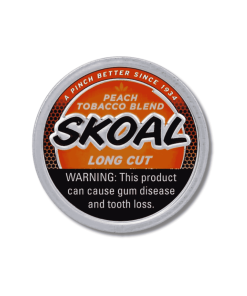Dipping Tobacco, Health
How Bad Is Dipping Tobacco for You?
Smokeless tobacco has become the go-to option for many nicotine users since it is slightly more discreet than cigarettes and other combustible tobacco products. When you consume one, you don’t release any smoke on your surroundings. Plus, you don’t put others in danger since smokeless tobacco doesn’t produce secondhand smoke.
Different types of smokeless tobacco can be bought from tobacco shops and online retailers today. One of them is dipping tobacco. Dipping tobacco, also known as moist snuff, is a smokeless tobacco that you consume by placing it between the lip and gum and leaving it there for quite some time.
Since dipping tobacco doesn’t release any tobacco smoke, you might think that it could be a safe substitute for cigarettes. However, it is still considered a tobacco product, which is widely known to be harmful to one’s health. The real question now, therefore, is how bad dipping tobacco is for you. Explore the reality behind the health effects of smokeless tobacco like dipping tobacco here at NS4L.
How Bad Is Dipping Tobacco for You Really?
Numerous variations of smokeless tobacco are currently offered in the tobacco market right now. One of them is the ever-popular Swedish snus, which is the inspiration behind nicotine pouches. Other smokeless tobacco products you can get include chewing tobacco and dissolvable tobacco products.
Another smokeless tobacco product you can take advantage of today is dipping tobacco. Dipping tobacco is currently available at Native Smokes 4 Less, a reliable online retailer of smokeless tobacco products as well as other nicotine products.
Smokeless tobacco users actually love dipping tobacco as it is somehow discreet. Dipping tobacco doesn’t produce any tobacco smoke or vapour. So, you can technically consume it in places where smoking is prohibited. Whether you’re on job sites, sports arenas, or hunting cabins, you can simply place it in your mouth and enjoy its nicotine hits.
Speaking of hits, a lot of tobacco users likewise enjoy dipping tobacco as it can deliver a strong and fast-acting dose of nicotine through the soft tissues found in the mouth. One pouch or pinch of dipping tobacco can then last for 30 minutes or longer, making it a cost-value and low-maintenance option for many users who want to savour the effects of nicotine for a long time.
Lastly, people want to go for dipping tobacco since it is a cool and unique way of consuming tobacco. Many people in Canada and the United States tie dipping tobacco to athletes, farmers, or tradespeople. The practice of dipping is then passed down through generations or shared among peers. This creates a sense of tradition and social bonding.
Given how popular dipping tobacco is, many people tend to overlook the harmful health effects of smokeless tobacco, especially in the long run.
Despite being discreet, the content of dipping tobacco still carries significant health risks. It still delivers high doses of nicotine. While it can provide extremely satisfying hits to users, consumption of nicotine through dipping tobacco may lead to nicotine dependence and nicotine addiction.
Aside from nicotine, dipping tobacco releases dozens of harmful chemicals whenever you place one in your mouth. Some of these chemicals include tobacco-specific nitrosamines or TSNAs, polonium-210, and polycyclic aromatic hydrocarbons or PAHs. As they enter your body through the tissues of your mouth, gums, and lips, they can put you at risk of getting oral cancers. They can also cause gum disease, tooth decay or tooth loss, and other oral-related health effects.
In Canada, oral cancers caused by tobacco remain a significant concern, with public health campaigns specifically targeting youth and Indigenous communities where smokeless tobacco use is prevalent.
The presence of cancer-causing chemicals and nicotine makes dipping tobacco truly far from being safe. It may be less visually harmful and offensive than cigarette smoking, but the damage it may cause to you beneath the surface is just as severe.
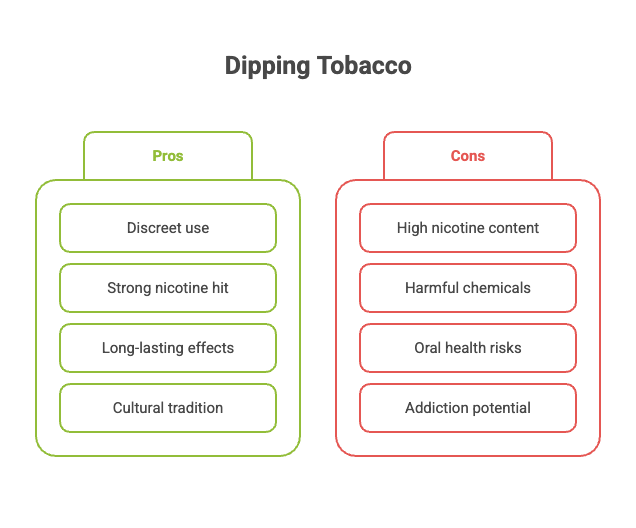
Health Risks Associated with Dipping Tobacco
Tobacco companies position dipping tobacco and other smokeless tobacco products as a less harmful and more discreet way to quit smoking. However, there are no studies indicating that such products can be effective in helping people with the said habit.
And even though some people might still depend on dipping tobacco as a way to quit smoking, they are still not safe from the health risks associated with this type of smokeless tobacco. After all, it still contains tobacco leaves, which produce some harmful byproducts that are present when you smoke cigarettes or use other types of oral tobacco products.
Medical experts and public health authorities around the world warn users who use dipping tobacco to be wary of its long-term health effects. According to them, dipping tobacco regularly for a long time may result in severe health complications in various parts of the body.
Based on the Centers for Disease Control and Prevention or CDC, smokeless tobacco like dipping tobacco may pose numerous health risks when you use it regularly. They include the following:
- Nicotine addiction: If you use dipping tobacco regularly, you might gradually depend on the effects of nicotine until you no longer function without consuming the said smokeless tobacco. You see, dipping tobacco can provide higher doses of nicotine to one’s body as opposed to cigarettes. When you suddenly stop using dip tobacco, you might end up experiencing withdrawal symptoms like intense cravings, anger, and a depressed mood.
- Cancer: Using dipping tobacco also raises the risk of cancer in the mouth, throat, pancreas, and esophagus since it releases cancer-causing chemicals like TSNAs, polynuclear aromatic hydrocarbons, and harmful metals every time you put it in your mouth. You might also get small white or gray patches inside your mouth called leukoplakia. These patches may turn into cancer, which is why it’s best that you consume it in moderation.
- Heart disease and stroke: Smokeless tobacco like dipping tobacco may likewise strain your cardiovascular system by increasing your heart rate and blood pressure. If you use dipping tobacco for a long time, you might be at risk of dying of heart disease and stroke.
- Dental disease: Dipping tobacco products may contain sugar and irritants that could cause cavities, worn-down teeth surfaces, teeth staining, gum disease, receding gums, bad breath, bone loss around roots and tooth loss. These dental diseases can develop even in the short-term use of dipping tobacco. Additionally, using dipping tobacco repeatedly exposes the same spot of your mouth to toxic substances, causing oral diseases and issues.
- Pregnancy risk: When you use smokeless tobacco like dipping tobacco during pregnancy, it raises the risk of stillbirth, low birth weight, and a heart rate issue in infants.
The health risks of dipping tobacco may not only affect the users but also others around them.
If you have children or pets, it’s best that you store your dipping tobacco properly and in a secured area so they won’t consume it accidentally. When they consume dipping tobacco accidentally, it will only lead to nicotine poisoning, causing symptoms such as nausea, vomiting, shaking, trouble breathing, coma, and even death.
Cancer Risks and Prevention
One of the major health risks that you can get from using dipping tobacco is the increased risk of developing cancer. Here in Canada, cancer of the mouth remains a growing concern among men and Indigenous populations. Dipping tobacco exposes one’s body to carcinogenic or cancer-causing compounds like TSNAs, which are also common in other tobacco products.
Some of the most common cancers that are associated with dipping tobacco consumption include mouth, throat, esophageal, and pancreatic cancer. The exposure to cancer-causing chemicals with dipping tobacco is direct and prolonged since it is often held in the mouth for a long time.
Early signs of cancer due to dipping tobacco consumption may be detected and identified by dental professionals during routine checkups. They may notice leukoplakia and unusual gum growths. When left untreated, they may develop into malignancies, necessitating aggressive treatments such as surgery, radiation, or chemotherapy.
So, in terms of early detection, regular dental visits are key. Dentists are trained to identify early signs of oral cancer and precancerous conditions in the mouth. They can then refer patients for further screening if needed. Self-checks for persistent sores, lumps, or alterations in mouth colour are also highly recommended to make sure you are still free from any forms of cancer.
To slowly reduce the number of people using dipping tobacco and other tobacco products, Health Canada mandates tobacco companies to include warning labels on their respective packaging. They also support educational programs, educating users about the risks of dip tobacco consumption.
But the most effective way of preventing dip tobacco-related cancer is to quit tobacco consumption entirely. If you find it difficult to quit tobacco, you may want to consult a medical professional as they can give you a step-by-step guide. You may even opt for nicotine replacement therapy or non-tobacco alternatives under medical supervision. Behavioral methods are also available, letting you acquire the needed coping skills to quit tobacco consumption in general.
Curbing nicotine withdrawal symptoms may then be done through prescription medicines. They include bupropion (Wellbutrin SR) and varenicline.

Mouth and Tooth Problems
Dip or dipping tobacco is one of the most common forms of moist snuff in most parts of the world. It is known for taking advantage of finely ground tobacco, making it easier for you to place it in your mouth.
Consuming snuff tobacco like dipping tobacco can be enjoyable. However, it poses a profound and visible impact on your mouth and teeth.
Unlike cigarettes that quickly pass through your mouth, dipping tobacco and its content linger against the gums for a long time. This exposes your teeth to abrasive and acidic substances, degrading soft tissues and tooth enamel. Fortunately, a number of oral health issues like gum recession, tooth decay, and tooth loss caused by dipping tobacco may still be treated by dental professionals.
Gum recession is particularly preventable among dip users. The constant pressure and chemical irritation from dipping tobacco cause the gum line to recede from the teeth, which exposes the roots and increases tooth sensitivity. It then leads to pain while eating or drinking.
The long-term effects of smokeless tobacco like dipping tobacco in your mouth, unfortunately, might be irreversible without surgical intervention. This is because dipping tobacco has sugar content and sand-like texture that causes the formation of cavities and wears out enamel. In the long run, you might develop sensitive teeth and experience persistent gum infections or periodontal disease.
Chronic bad breath or halitosis is another concern when using dipping tobacco. And since it is often resistant to typical oral hygiene solutions, it makes social interactions uncomfortable and reduces your quality of life. Dipping tobacco users may also notice dark stains on their teeth and tongue, making them difficult to remove even with professional cleaning.
To prevent these mouth and tooth problems from occurring, it’s imperative that you gradually reduce your tobacco consumption until you no longer depend on it. You can then facilitate partial healing through appropriate dental care and treatment from your reliable dentist.
Addiction and Nicotine
Dipping tobacco, like other types of smokeless tobacco, naturally produces nicotine due to the presence of tobacco leaves. Nicotine, in general, is a stimulant that helps provide a soothing sensation to one’s mind and body. The downside of the same stimulant, however, is it pushes one to consume more nicotine products just to get the satisfying hits of nicotine.
One of the reasons why dipping tobacco is picked by many smokeless tobacco users is its high nicotine content. A single dipping tobacco can easily rival or even exceed the nicotine levels of multiple cigarettes. So, if you’re using one, it may lead to a fast and powerful addiction cycle.
When you depend on dipping tobacco for its nicotine hits, it might become more difficult for you to quit the said smokeless tobacco later due to its high nicotine concentration. You may then experience withdrawal symptoms like irritability, difficulty concentrating, insomnia, headaches, and cravings. These symptoms can then disrupt work, relationships, and mental health.
Depending on and getting addicted to nicotine through dipping tobacco can also fuel the continued use of smokeless tobacco despite its known risks. Even if you experience gum bleeding, mouth sores, or other oral health effects, you may find it difficult to stop and leave the dipping habit.
Fortunately, Canada and other countries in some parts of the world offer a number of resources for those who want to quit dipping. There are now programs and quit lines that can provide tailored support such as counselling, quit kits, and access to nicotine replacement therapy. The same programs and quit lines can be accessed to help people quit smoking and depending on tobacco in general.
Dipping tobacco, ultimately, is not a harmless habit. It is also not a safer alternative to smoking. Instead, it’s a nicotine delivery method that carries its own addiction risks and health consequences.
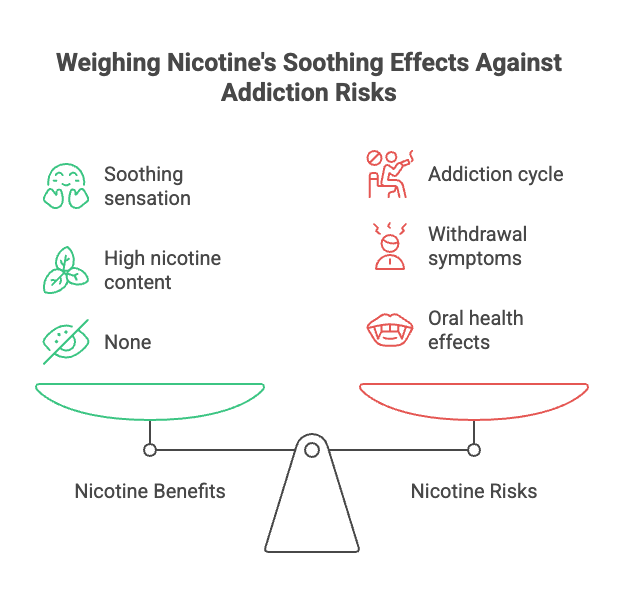
Frequently Asked Questions
How bad is dipping tobacco for you?
Dipping tobacco is harmful to your health since it can deliver high doses of nicotine and expose your mouth to carcinogenic or cancer-causing chemicals. It can then significantly increase the risk of gum disease, tooth loss, and oral cancers.
How likely is mouth cancer from dip?
Using dipping tobacco over a long period increases your risk of developing mouth cancer, especially in the area where the said smokeless tobacco is regularly placed. The risk can even get higher if you use it daily for years, as tobacco-specific nitrosamines or TSNAs in dip are known carcinogens.
Summary
Dipping tobacco is a smokeless tobacco that provides a discreet way of enjoying nicotine. Since it doesn’t produce any smoke, you can use it whenever and wherever possible. However, it is still considered a tobacco product, which means it can cause a number of health effects that can get worse the longer you use the said smokeless tobacco.
If you’re wondering how bad dipping tobacco is for you, it often depends on how long you consume it as well as how frequently you use it. In the long term, dipping tobacco can affect your oral health significantly, leading to tooth decay, gum disease, and others. It can also lead to nicotine dependence and nicotine addiction.
Due to the risks surrounding dipping tobacco, you might think that quitting it could be your best step to keep your body healthy. Learn how to quit dipping tobacco here at Native Smokes 4 Less.




